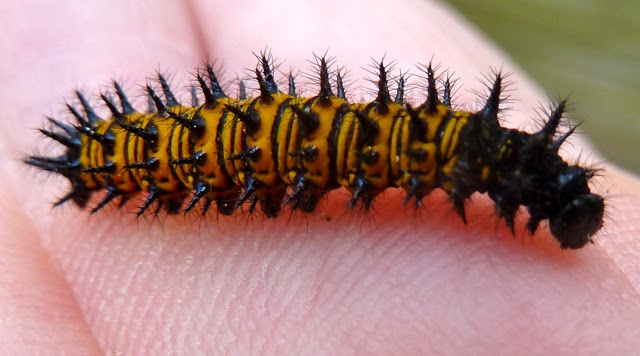Kevin thought I knew what it was and was testing him. He wrote back that he did not recognize it immediately having only seen adults. Fortunately he sent me a face saving clue. "According to Wagner, they prefer turtlehead (whatever that is), but will use plantain, foxglove, honeysuckle, lousewort, and viburnum."
 |
Baltimore checkerspot |
Many years ago (12+ years) after we burned our first glade, Linda Ellis botanized with us and pointed out a single tiny emerging leaf of false foxglove, Dasistoma macrophylla, and told us that it was a host plant of the Baltimore Checkerspot. Another 20 feet along the trail and we found this caterpillar feeding on a tiny plant. That was the moment when I realized how little I knew compared to experts, be they amateur or professional.
We see Baltimore checkerspots along the edge of our road from time to time in mid-summer. They are smaller than the swallowtails, appearing dark in flight but not quite black, and tend to fly low along the ground, thus they are beautiful close up but subtle in the wild. Their caterpillars will spin a web on a plant and remain protected in it for several weeks before crawling under leaf litter of the forest floor. They will overwinter as a caterpillar, then pupate in the spring.
The butterfly is totally distinctive and once you see one you will never forget it. Linda Ellis gave a nice description on a previous blog.
*Caterpillars of Eastern North America, Wagner
